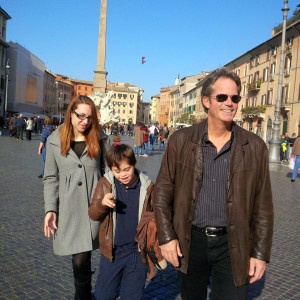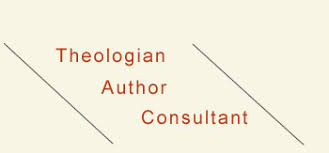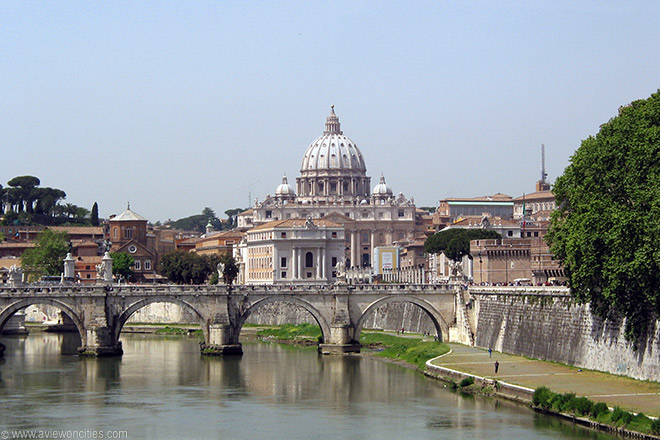 Thomas D.Williams 'template for real Catholic reform in 2017' excludes the dogma extra ecclesiam nulla salus.In his article he cites reformers and rediscovers over Church history and does not mention that ALL of them affirmed the dogma extra ecclesiam nulla salus which he never did when he was a priest and Dean of Theology at the University Pontificio Regina Apostolorum,Rome.
Thomas D.Williams 'template for real Catholic reform in 2017' excludes the dogma extra ecclesiam nulla salus.In his article he cites reformers and rediscovers over Church history and does not mention that ALL of them affirmed the dogma extra ecclesiam nulla salus which he never did when he was a priest and Dean of Theology at the University Pontificio Regina Apostolorum,Rome.'St. Jerome, St. Norbert, St. Thomas Aquinas, St. Clare of Assisi, St. Gregory the Great, St. Ambrose, and finally St. Augustine ' all held the 'rigorist interpretation' of the dogma extra ecclesiam nulla salus.
'St. Pius V, Gregory XIII and Sixtus V-each contributed in his own way to the much-needed Catholic revival following the Council of Trent' and they did not infer that there were known cases of the baptism of desire and blood saved without the baptism of water in the Catholic Church. Yet this was the theology which Thomas D.Williams taught as a Legion of Christ priest. They were Feeneyites. Thomas D.Williams was a Cushingite like the rest of the faculty.



True Christian reform is above all spiritual in nature and is exemplified and shepherded by the saints. The Catholic reform of the 16th and 17th centuries provides a magnificent example of this, with a proliferation of holy men and women of all stripes, from mystics to missionaries to martyrs to saints given over to charitable works.
Cardinal Ratzinger in Redemptoris Missio rejects them.He refers to their 'ecclesiocentrism of the past'.Similarly he said in March 2016 that extra ecclesiam nulla salus is no more like it was in the 16th century.Williams and John Allen Jr. at Crux say the same thing.For them Vatican Council II is Cushingite and a rupture with the 16th centuty which was a golden period in the history of the Catholic Church.
At this time, St. Ignatius of Loyola founded the Society of Jesus (the Jesuits), who took up the banner of the Counter-Reform with great vigor, bolstering the faithful and sending missionaries like Sts. Francis Xavier, Matteo Ricci and Peter Claver to the far corners of the earth.
They did not believe that there were known cases of non Catholics saved in invincible ignorance of the Gospel and so every one did not need to enter the Church as a member but only those who knew. Since only those who knew about Jesus and the Church and did not enter would go to Hell (Lumen Gentium 14). This doctrine was not there in the 16th century i.e visible for us exceptions to the dogma extra ecclesiam nulla salus.


Later during the revival, St. Philip Neri, the great preacher and apostle of Rome, founded the Congregation of the Oratory and St. Vincent de Paul founded the Daughters of Charity and the Vincentians, who dedicated themselves to missions and works of charity.
St.Philip Neri was a Feeneyite.
Meanwhile, the holy Franciscan bishop of Geneva and patron of journalists, St. Francis of Sales, was revitalizing the local Church in innovative ways, with a special outreach to lay spirituality with his Introduction to the Devout Life.
St.Francis of Sales was a Feeneyite.Thomas D.Williams is not.
This spiritual reform of the Catholic revival included a reform of religious life, which in many areas had fallen into every sort of decay and languor. Spearheading the reform of the Carmelite order were two mystics, St. Teresa of Ávila and St. John of the Cross, who championed a Christ-centered spirituality suffused with love for the person of Jesus.
St.Teresa of Avila said Lutherans are on the way to Hell. She was a Feeneyite for her there could only be an ecumenism of return.
Martyrs, too, came in many forms in this period. Some, like Paul Miki and his 25 companions in Japan, or at the end of this period the great French Jesuit martyrs Jean de Brebeuf and Isaac Jogues in northern New York State, gave their lives for Christ while preaching him to those who had never heard his name.
If there is known salvation outside the Church as there is for Thomas D.Williams and the liberal theologians then Jean de Brebeuf and Isaac Jogues would not give their life as missionaries.
Others, like the Englishmen John Fisher and Thomas More bore witness to the Catholic faith at the hands of an absolute state that demanded they betray their faith, and later Edmund Campion, who died at the hands of a Protestant reform run amok.
They knew that the Catholic Church had the fullness of the truth and outside the Church there was no salvation.

As Pope Francis wrote in his first teaching letter, Evangelii Gaudium (“The Joy of the Gospel”), “we cannot forget that evangelization is first and foremost about preaching the Gospel to those who do not know Jesus Christ.” This was the driving force behind the enormous missionary outreach of those years.
No.This was not the driving force.The driving force was knowing Jesus in the Catholic Church outside of which there is no salvation.
Pope Francis has presented a kerygma without the necessity of being a member of the Catholic Church for salvation. This would be heresy for the saints and martrys named here.
Thomas D.Williams calls for a reform in the Church with a new theology and new doctrines which are heretical and irrational but politically correct with the Left, of which he now is a part of.
-Lionel Andrades1.
https://cruxnow.com/commentary/2017/01/11/template-real-catholic-reform-2017/




